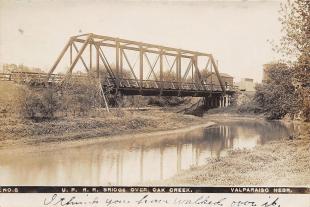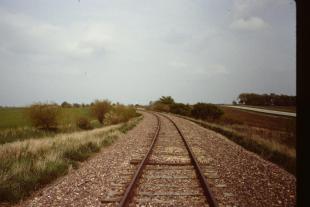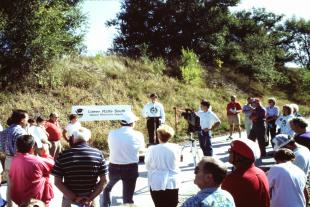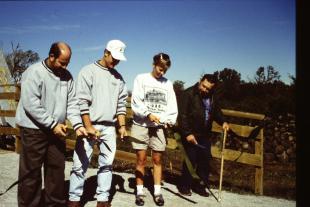
LPSNRD trails stretch across our district, with three recreational trails: MoPac East, Homestead, and Oak Creek. These routes have not always been havens for cycle, foot, and equestrian traffic, but rather the corridors of railways that tied together communities.
The railways date back to the 19th century. The Omaha & Republican Valley Railroad, a subsidiary of the Union Pacific Railroad began utilizing what is now the Oak Creek Trail in 1877. The Union Pacific also began servicing where the Homestead Trail is in 1880. The Missouri Pacific railway, now the MoPac East Trail, saw its first train use in 1886. Trains transported grain, limestone, lumber, livestock, coal and even travelers from town to town, vital for commerce in the region at that time.
In the 1980s, improvements to roads and changes in transportation and shipping made some rail lines less appealing. With minimal use and damage to tracks with no intent of repairing, the railroads started looking to sell the less profitable rail lines, making the corridors available for new users. With the help of the Great Plains Trails Network and Nebraska Trails Foundation, the corridors were purchased and transferred to the LPSNRD. In the case of the Oak Creek Trail, a rail bank agreement was the means for acquiring the route.
The MoPac East Trail’s first mile, east of 84th street, opened for use in 1996. Today LPSNRD’s portion of the trail begins at 98th street, the dedicated trail stretches to Wabash and includes an adjacent equestrian trail.
The Oak Creek trail also opened in 1996. An equestrian trail follows for the entire length of the trail, making it one of the state's most versatile recreational trails.
 .
. 
The Oak Creek Bridge in Valparaiso (1910s). Tracks that are now the MoPac East Trail.
 .
. 
The MoPac East Trail opening ceremony (1996). The Oak Creek Trail dedication ceremony (1996).
The Homestead trail opened in 2007 and extends south from the City of Lincoln’s Jamaica North Trail.
Today, the LPSNRD trails see significant use from cyclists, walkers, runners, and equestrian users. The MoPac East Trail sees hundreds of cyclists every Tuesday in the summer for the weekly Nacho Ride. The ride welcomes the public to travel along the trail from Lincoln to Eagle and back. Many riders stop to get refreshments at establishments in Eagle. The trails also hold a variety of events hosted by other organizations and groups, many of which are open to the public.
What Lies Ahead
Upkeep and maintenance of trails and the vegetation that borders the routes is an ongoing process for the district. With the help of trail users, the NRD is regularly monitoring how rainfall and use wears different areas of the trail, repairing portions as needed, and prioritizing the safety of trail users.
The district is also regularly adding enhancements and accommodations to the trail to make users’ experience even more pleasant. Recently, this has included the completion of the Wabash Trailhead on MoPac East Trail, offering parking and a vault toilet for trail users that was completed in early October.




